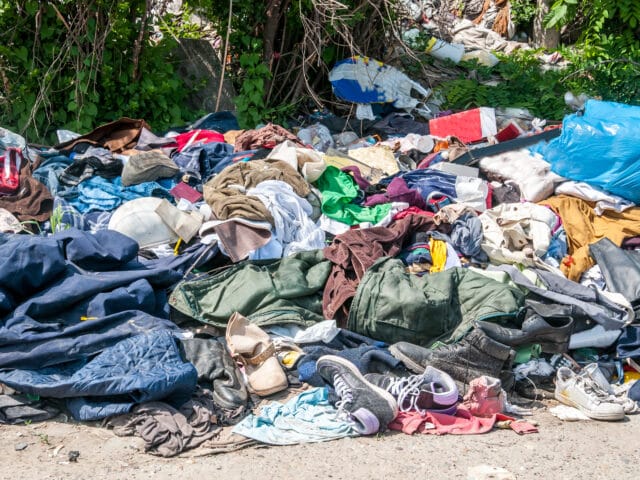Fashion
The environmental costs of fast fashion

Many clothing producers have design-to-customer pipelines tailored to pump out cheaply produced and priced garments that capitalize quickly on current fashion trends. The problem? Styles are changing faster than ever, increasing supply and demand pressures. Worldwide, people consume 80 billon new pieces of clothing every year — a 400 per cent increase from 20 years ago! Though the clothing costs less, the environment ultimately pays the price.
Water use and chemical run-off
According to the UN Environment Programme, the fashion industry is Earth’s second-largest water consumer (agriculture leads). It uses 93 billion cubic metres of water, enough to meet the consumption needs of five million people. Wastewater and chemical run-off from textile factories pollute water sources and soil surrounding factories. About 20 percent of wastewater worldwide is from dyeing textiles. It’s extremely toxic. Often no treatment can make it safe again.
The world witnessed the scale of this water crisis in Dhaka, the capital of Bangladesh. Flooding created fast-moving rivers and canals turned black from wastewater full of toxic chemical dyes. Dhaka is the world’s second biggest garment manufacturing hub. It’s one of the most climate vulnerable cities on Earth.
Carbon emissions
The fashion industry is responsible for eight to 10 per cent of global emissions. That’s more than the aviation and shipping industry combined! At this pace, fashion emissions will surge by more than 50 per cent in 2030.
Making plastic fibres into textiles (e.g., polyester, nylon, polyamide, acrylic, etc.) is energy-intensive and relies on large quantities of fossil fuels. Production emits huge quantities of carbon and volatile particulate matter and acids like hydrogen chloride.
Transporting fast fashion garments also uses a lot of energy and creates carbon emissions. The global supply chain means products are shipped long distances, often on freight ships and planes.
Microplastics
Many fast fashion brands use synthetic, non-biodegradable fibres such as nylon, polyester and acrylic. A 2017 study reported that about 35 per cent of all microplastics in the ocean come from washing synthetic textiles. Microplastics harm marine ecosystems, aquatic life and human health.


)






